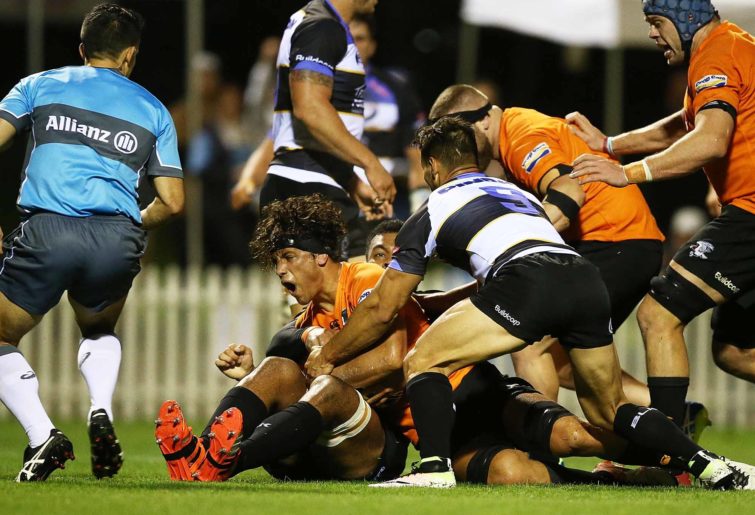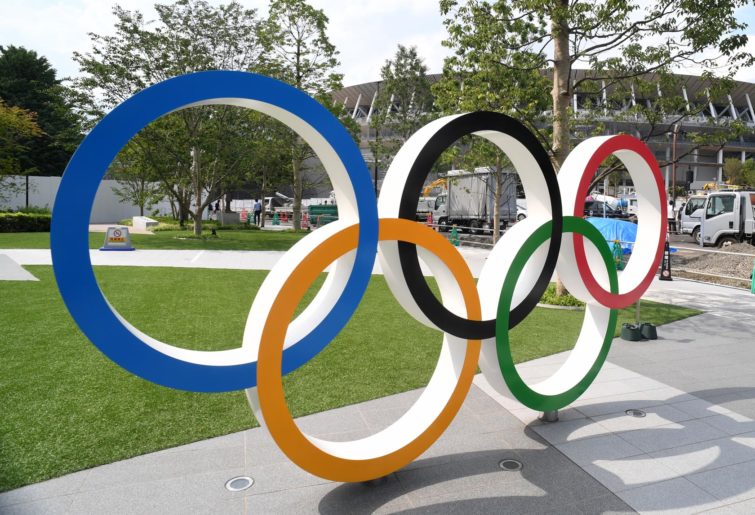WATCH: North great sent off on local footy debut after appearing to headbutt opponent
Jack Ziebell was playing his first match for Avondale Heights when he was yellow-carded for headbutting an opponent during a scuffle following a late…
Opinion
A love of sport is a common feature of many Australians. It is part of our psyche and something that binds us together.
Sport in Australia is an industry employing 220,000 people: administrators, coaches, support staff, groundskeepers, commentators, broadcasters and caterers.
Australia has about 60 recognised sports. Only eight are fully professional (the four football codes, cricket, tennis, basketball and golf). Some, such as netball, are semi-professional, as are some of the female football codes.
The professional codes have been hit hard by the closure of all sporting activity for the foreseeable future, although several are looking at options to restart earlier.
COVID-19 will only accentuate deep-seated problems for rugby union and maybe football, which were already in a world of pain, and with future broadcasting rights uncertain.
In addition to game revenue, professional sports are very much dependent on sponsorship and broadcasting rights. These streams of gold have allowed the sports to support new women’s competitions, rising salary caps, expanding head offices and, in the AFL’s case, aggressive expansion into new geographic territories.
Sponsors and broadcasters will most likely be more focused on rebuilding their own businesses before they worry about putting money back into sport. When they do, they will probably be far more choosy in who and what they sponsor.
Potentially, it may lead to even more sponsorship from the gambling industry. We are already seeing some re-negotiating of sponsorships deals. It is not only NRL players grasping for their contract payments while their sport’s administrative and support staff are laid off.
The AFL is the best run professional sport in Australia, despite their critics. Last week, Channel Nine scorched the NRL’s administration.
Tennis as a sport dodged a bullet as, at least in Australia, the season was completed in early February and may have some hope of the situation returning to normal by next January. But the other three major events have all been cancelled or postponed and the International Tennis Federation stood down 50 per cent of its staff.
While women’s sport has always been a major component of Australian sport, the recent professionalisation of women’s sports has had a profound effect on the popularity and participation rates of girls and young women taking up sport. Major sport organisations will need to recognise this and not lose that momentum as they rebuild their membership bases in the post-pandemic world.

(AAP Image/Michael Dodge)
There has also been a lot of criticism that the major football codes have distanced themselves from grassroots supporters and reduced support to country leagues.
Consider traditional Olympic sports such as swimming, athletics, golf, hockey, gymnastics, netball, sailing, rowing and triathlon. At the top level they offer the opportunity to make some money from player payments and endorsements, but not enough to live on by themselves.
Income is mainly derived from membership fees, event income (although event management is often outsourced), varying levels of sponsorship income, training fees and how-to programs plus government support for high participation and community programs via Sport Australia. They usually operate under a federated model with a national body and state affiliates.
Feedback is that those infrastructure-based sports that require halls, pools, playing fields and watercraft such as basketball, swimming, gymnastics, hockey, netball and sailing are doing it extremely tough. They have no income coming in and still major expenses such as salaries, facility hire and storage costs.
As an example, sailing in the ACT is dependent on members’ fees (due September), race and event fees and income from such activities as boat hire and sailing school lessons. Income from events and activities has now stopped completely, but the requirement to pay building and staff expenses continues. There is particular concern for many sports that membership numbers will reduce significantly at annual renewal time because of the uncertainty over what events might take place.
Some sports such as triathlon are relatively lucky in that the season is essentially over, although Iron Man, which is a commercial body, has had to cancel the massive Port Macquarie Iron Man event in May. Plus it does not run its own events, rather private race or event directors undertake most races. But if many race directors close down due to financial issues, then fewer events will be offered, which feeds into reduced membership.
An observation of the financial accounts for many major sport bodies would highlight reserves of less than six months expenditure with no income, and so in the current environment, they are only sustainable for the next few months. A number of sports are looking at contributions at the state level to keep the national body afloat but this has not stopped large staff reductions.
In the short term, events such as world age championships and masters events for many sports will be on the back foot as not only health but also financial issues limit support and participation.
Many bodies are either individually or collectively reaching out to the government for emergency funding, including possibly covering membership fees and rolling over existing funding programs. Meeting cash-flow requirements remains a priority.
Community, grassroots and club sport will always survive as it is used to running on volunteers and minimal funding, and after all, this is where 90 per cent of the sporting population is. How well individual community sports do will depend on costs of participation and the extent to which they depend on grants from national or state bodies.

(Photo by Mark Metcalfe/Getty Images)
A drop in participation may force clubs to close their doors, and what support will they get from their state and national bodies, who are in turn focused on their own survival and have been accused of ignoring grassroots sport for many years?
Hopefully community and club sport will quickly re-emerge at local grounds, parks, pools and lakes once the curfews are lifted. There will always be committed parents and members prepared to put in the long hours for their children’s benefit as anyone who has been involved with Little Athletics would note.
Participation may lift as people are allowed out of lock-down, while community sports rely on ageing volunteers who may not be willing to continue post-COVID-19.
COVID-19 is a wake-up call for many sports, particularly at the professional level, where hubris and arrogance has led to a distancing from grassroots support, bloated administrations and a failure to observe basic financial rules.
Governments at all levels are being heavily lobbied to provide assistance to the sporting industry or convert some existing grants for high performance or other projects to general revenue.
Providing support for sport is always seen as a vote winner, particularly in an Olympic environment, but will the community still agree as they see the impacts of COVID-19 on employment and retirement savings?
Into the future, the government will need to make hard decisions. For example, are sports any more deserving of hand-outs than the charity sector, which is seeing falling donations, a lack of volunteers and rising demand for their services? Or the cultural and art sector, where all performances are cancelled and museums and galleries are closed? And why should the government support professional sports that have not saved for a rainy day or made poor financial decisions when many in our community are suffering from factors outside their control?
The role of organisations such as Sport Australia will change their focus to how do they assist the survival of many sports at a national level. They will need to be a champion for continuing funding for sports, particularly the Olympics in 2021, given that many sports already expended funding expecting the Games to be this year.
But with a budget requiring hard choices, can Olympic, Paralympic and Commonwealth Games elite and high-performance sport depend on essentially a double dip at government funding?

(Photo by Etsuo Hara/Getty Images)
Even if assistance is provided, COVID-19 will have a long tail and sports will be set back many years. They will have to cut their cloth accordingly. Things will have to be done far more efficiently and cost effectively, removing excess and duplication with a focus on key achievables.
What is nice to do will have to be dropped and this is where the rubber will hit the road as income reductions drive staff and activity reductions. But it is a difficult process to drop existing activities to focus on priorities when members may have a variety of expectations as to what are core activities.
Sport should be using this downtime productively, reviewing its future strategic priorities and doing various budget scenarios and costings to be ready for different future options. It’s time for innovative thinking in how sport might be delivered more efficiently and cost effectively in the future, particularly in a changing climate where sponsorship and broadcasting rights are likely to be significantly reduced at the professional level.
Maintaining communication with current membership or customer bases is critical. For example, Home Athletics is a new initiative of Little Athletics and Athletics ACT designed to help people stay active, engaged and connected with each other. The newsletter of the ACT Bilby Triathlon club contains weekly suggestions on training programs, while the home page of Triathlon Australia answers questions on training in the current environment.
In the past sport has been very popular in times of national stress but did not face a ban on attendance.
And then we need thoughts on what new operating structures might look like. The sport sector currently employs approximately 220,000 people and relies on about 1.8 million volunteers. This mix might need to be altered in the future, at least in the short term. Those sports who can re-connect with the grassroots community and be seen to be humble may be the winners.
Will Super Rugby survive and what will be the viability of Rugby Australia? Grassroots and club rugby may re-emerge and continue to survive and thrive. After all, rugby has approximately 86,000 members in 770 clubs. As far as elite rugby goes, maybe it needs a strong east coast club competition feeding into three provincial teams (Queensland, NSW and ACT) playing each other and in turn feeding into the Wallabies. This would be a return to a very cost-effective approach of centralised coaching and high performance support.
Will the AFL bite the bullet and reduce support for the Suns while maintaining investment in Sydney at the community level and the GWS level?
And then the elephant in the room is that we seem to have temporarily forgotten about climate change and the major effect that it will have on sport in the future in facilities, and competition structure, format and timing.
It is important to not be negative because, in time, sport will resume, albeit perhaps in different forms than we are used to. This in itself may not be a bad thing.
The future is not what it used to be.